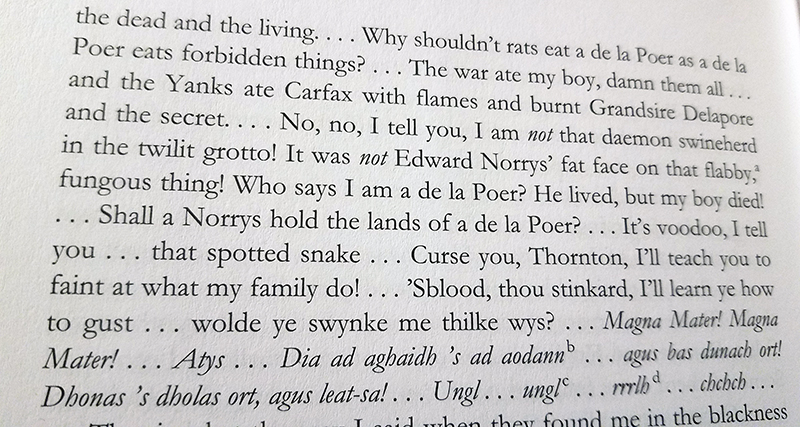Necessarily, any American psychogeography will form a webwork of displacements. In such a psychogeography, there are displacements on top of displacements on top of displacements. This is because the formal structure of displacement is necessarily recursive. A structure is recursive when the shape of the whole structure recurs in the shape of its parts (e.g., a circle the circumference of which consists of a series of interlinked circles). In other words, displacement is an iterative process. It repeats itself, inducing vertigo – which is to say that displacement displaces not only whatever is displaced, but also the very act or movement of displacement as such. The shell game provides a simple enough example, given that, in playing it out, the operator not only obscures the location of the hidden object by manipulating it, but also deftly obscures the very act of its manipulation.
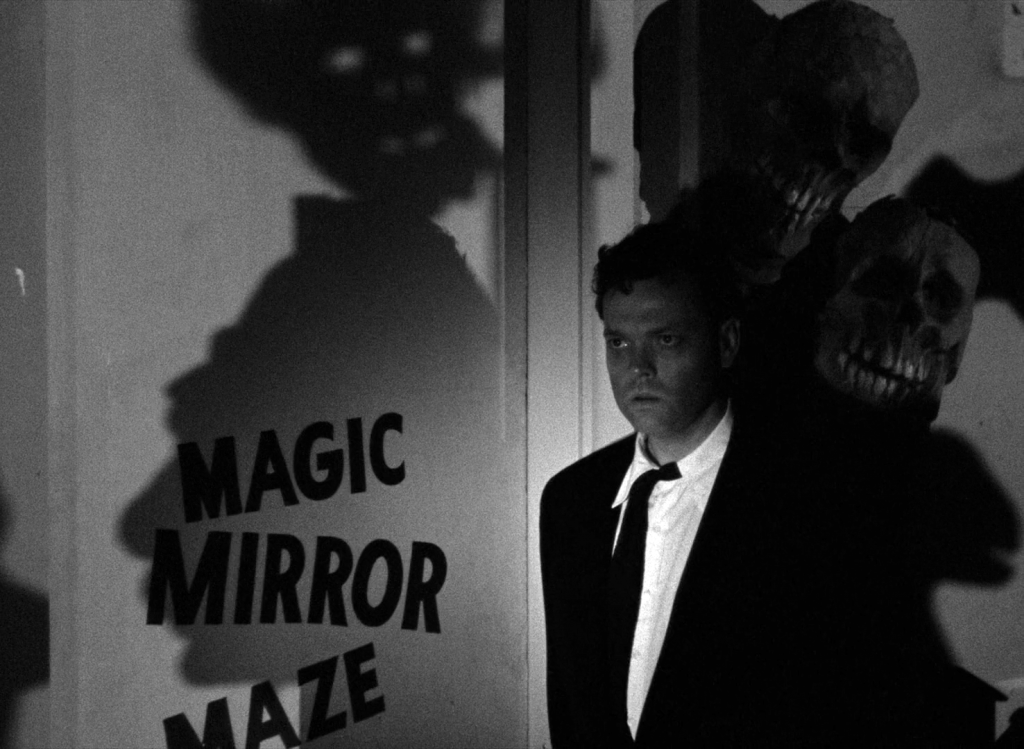
As a literary example, consider H. P. Lovecraft and Henry S. Whitehead’s “The Trap” (1931). What starts as a “minor puzzle” becomes a mirror puzzle, namely, the investigation of an antique mirror with a curiously spiraling crack (in which “all the many whorls in the ancient glass appeared to converge like a large number of spread strings held in one hand and radiating out in streams”). After its purchase, the antique mirror becomes a dread fractal prison for the narrator, a Connecticut schoolteacher named Canevin. Inside the mirror, Canevin discovers an antique-garbed company of characters trapped by a malicious glazier. Most notable, however, is what emerges from the mirror, or, rather, what pulls Canevin inexorably in: “an appearance of torsional movement, or of whirling; much like a minute yet intense whirlwind or waterspout, or a huddle of autumn leaves dancing circularly in an eddy of wind along a level lawn. It was, like the earth’s, a double motion – around and around, and at the same time inward, as if the whorls poured themselves endlessly toward some point inside the glass.” Canevin first notices this spiral in the mise en abyme that opens up between the antique mirror and a smaller mirror located in his bedroom. This spiral ensnares him in the nightmarish pocket dimension the antique mirror embodies. As he reflects, “It was more than a mirror – it was a gate; a trap; a link with spatial recesses not meant for the denizens of our visible universe […]” Canevin notes further that the mirror world is “not, as in scientific romance, an unknown and infinite realm of strange sights and fantastic denizens; but was rather a projection of certain limited parts of our own terrestrial sphere within an alien and normally inaccessible aspect or direction of space. It was a curiously fragmentary, intangible, and heterogeneous world – a series of apparently dissociated scenes merging indistinctly one into the other.”
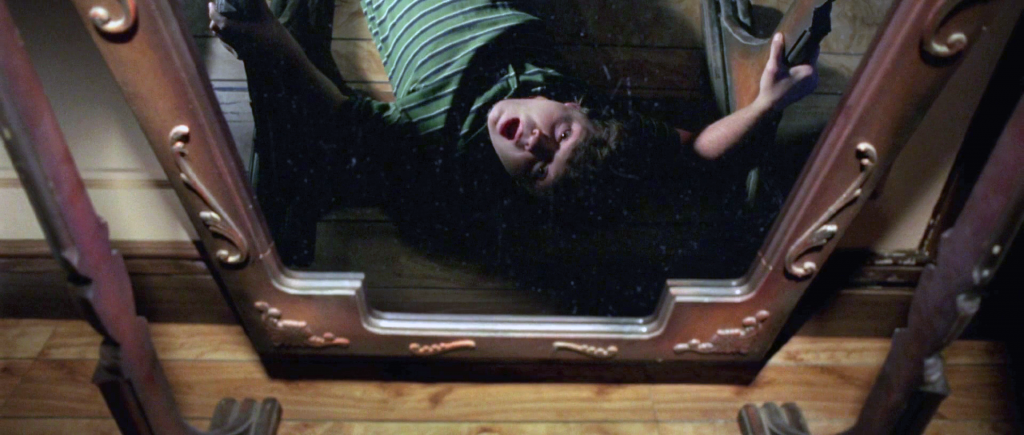
Here we enter the sprawling counterdimensionality of the American witch house, a subterranean hall of mirrors wholly formed of displacements, all the way down. Not only is the mirror world itself displaced – which is to say, subtracted from the realm of visible things, subducted into the very tain of reality – but it pitilessly displaces all its constituent parts, as well. In this regard, the mirror world is really no world at all, but, instead, a paradoxically habitable void through which displaced objects and subjects wander, all actions and movements inversely related to consequences and effects, all access to reality mediated through distortions and reflections. This is an existence by means of inexistence, existence “under spatial conditions which cut off all sensory communication, in either direction,” that is to say, between the house and the witch house, between the daylit world and the shadowy prisonhouse attending it.
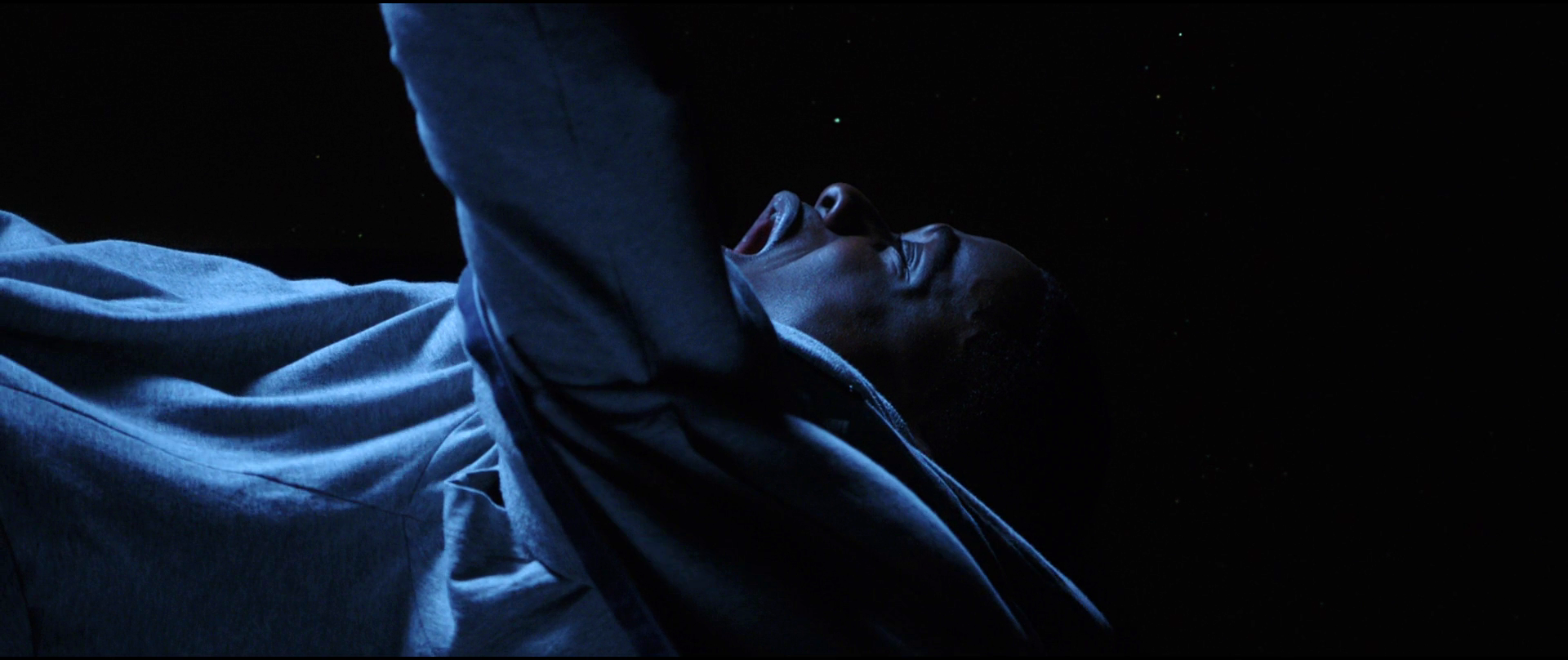
To map out the terrain of American psychogeography, then, requires a form of katabasis (from the Ancient Greek κατάβασις, meaning “a descent, a going under, undergoing, or a trip to the underworld”). For the terrain in question is below or underneath the distribution of tangibility, which is to say, it is the literal and metaphoric ground beneath our feet, consisting of burial chambers consigned to inexistence, occluded – displaced, but omnipresent and, therefore, in some sense at least, accessible by strange dérives. Walk down these crooked, lonely paths; come with me to the witch house.
There’s some irony, then, in the fact that one of Lovecraft’s most powerful explorations of American psychogeography – “The Rats in the Walls” (1924) – doesn’t even take place in the United States at all. (And don’t get me wrong here. Lovecraft’s intentions and his writing are in terrible tension with each other. Despite, or perhaps because of, the virulence of his views on ancestry, place, and race, his authorship functions like a medium for the haunting of America by its own bad conscience and vicious specters. Weird fiction has X-ray eyes.)
On July 16, 1923, an American named Delapore returns to “the seat of [his] ancestors” at Exham Priory, a “shell-like ruin” overlooking a “desolate valley” near the village of Anchester in England. Delapore’s first name is not recorded; he exists as a mere echo of his surname. In fact, so as to coincide with his return to the ancestral home, he reverts the Americanized surname Delapore to its original – de la Poer – which dates back to the Norman conquest of England. For the de la Poers were not Exham Priory’s autochthonous masters, but only its inheritors and caretakers. In this regard, the American Delapore has much in common with his predecessors. However, a gulf of several centuries separates the American Delapore’s return from the hasty departure of his progenitor for Virginia. Abandoned after “a tragedy of intensely hideous, though largely explained, nature,” Exham Priory has lain decaying and empty for more than four hundred years.
Pouring funds into the careful restoration of the estate is the American Delapore’s singular passion, and the completion of this project yields a lovingly reconstructed building, “practically new and fresh except for the walls,” which are ancient. The reconstruction only serves to highlight the “peculiarly composite nature” of Exham Priory, which even in centuries prior had existed as a chimera, cobbled together from multiple and incompatible vernaculars. Exham Priory was, and is, a slow riot of all the epochs of local architecture: Celtic, Roman, Saxon, Gothic. Its “foundation in turn was of a still earlier order or blend of orders.” The American Delapore also dwells at length on the storied nature of Exham Priory. For it has always been hated by the locals, haunted by dark rumors of monsters, plagues, violence. Exham Priory is “an accursed house,” and deep beneath it lurk broken signifiers of its cultic past: “I deduced that Exham Priory stood on the site of a prehistoric temple; a Druidical or ante-Druidical thing which must have been contemporary with Stonehenge […] About 1000 A.D. the place is mentioned in a chronicle as being a substantial stone priory housing a strange and powerful monastic order.” Of course, the American Delapore dismisses the “hackneyed spectral lore” of Exham Priory as parochial twaddle, as Gothic cliché ushered in by morbid rumors, mere historical pulp. The exception – “most vivid of all” – is the “dramatic epic of the rats,” a weird tale of a “scampering army of obscene vermin which had burst forth from the castle” just three months after its abandonment. As the American Delapore relates, somewhat minimally, “Around that unforgettable rodent army a whole separate cycle of myths revolves.” Back to 1923: Exham Priory is restored, and the American Delapore returns to occupy it. He relates that, although the building had been “mediaevally fitted, its interior was in truth wholly new and free from old vermin and old ghosts alike.”
Soon, however, the American Delapore is afflicted by dark dreams: “I seemed to be looking down from an immense height upon a twilit grotto, knee-deep with filth, where a white-bearded daemon swineherd drove about with his staff a flock of fungous, flabby beasts whose appearance filled me with unutterable loathing. Then, as the swineherd paused and nodded over his task, a mighty swarm of rats rained down on the stinking abyss and fell to devouring beasts and man alike.” Two things accompany these nightmares: the riotous agitation of the American Delapore’s black cat and the “nauseous sounds” that awaken both, sounds which resemble “the verminous slithering of ravenous, gigantic rats.” For this is how the titular rats in the walls make their presence known, and the American Delapore tracks their passage with surprising precision. “These creatures, in numbers apparently inexhaustible, were engaged in one stupendous migration from inconceivable heights to some depth conceivably, or inconceivably, below.” The alarming and mysterious nature of these events spurs the American Delapore to explore the cellars and the crypts making up the deep reaches of Exham Priory, and he takes with him as company both his black cat and his associate, Edward Norrys. They decide to spend the night in the deepest subcellar, surrounded by the fragments, or remnants, of an almost incomprehensibly ancient cultic past. Once, perhaps, Exham Priory had served as a temple dedicated to the worship of an archaic deity called by the Romans Cybele, the Magna Mater (the Great Mother), who with dread fecundity births the world from shadows. There, in the night, the American Delapore dreams again, with even greater clarity. All his visions seem “nearer and more distinct – so distinct that I could almost observe their features.” But his dreams fade upon the waking, trampled by the rushing sound of a torrent of rats pouring through quaking walls and into the earth beneath them. He recollects of his dreams, “Ultimate horror often paralyses memory in a merciful way.” The American Delapore and Norrys then decide to gather a small company of archaeologists and psychic investigators, suspecting that below the deepest subcellar is some even deeper subterrane. Returning again to Exham Priory, the company of experts descends.
Their descent is a katabasis. First, underneath a feature resembling an altar, they discover a staircase littered with “human and semi-human” bones: “It was then that Sir William, examining the hewn walls, made the odd observation that the passage, according to the direction of the strokes, must have been chiseled from beneath” (emphasis in original). Down the worn stone stairs, they discover a nightmarish landscape, a “twilit grotto of enormous height, stretching away farther than any eye could see; a subterranean world of limitless mystery and horrible suggestion. There were buildings and other architectural remains – in one terrified glance I saw a weird pattern of tumuli, a savage circle of monoliths, a low-domed Roman ruin, a sprawling Saxon pile, and an early English edifice of wood […]” Hell is other architectures, all riotously juxtaposed, a full display of the jumbled war that makes up time itself. “[B]ut all these were dwarfed by the ghoulish spectacle presented by the general surface of the ground. For yards about the steps extended an insane tangle of human bones, or bones at least as human as those on the steps. Like a foamy sea they stretched, some fallen apart, but others wholly or partly articulated as skeletons; these latter invariably in postures of daemoniac frenzy, either fighting off some menace or clutching other forms with cannibal intent.” Mixed in with this ocean of skeletal remains are the tiny bones of rats (and rats and rats), but the American Delapore emphasizes the parallel between one set of bones and the other: “Horror piled on horror as we began to interpret the architectural remains.” For echoing the admixture of architectural epochs is the chaotic amalgamation of bones and skulls belonging to alternative and exotic evolutionary orders, all appearing human and nevertheless evincing the disturbing plethora of all the ancient tracks. (Our bodies, and their histories, are not what we think they are.)
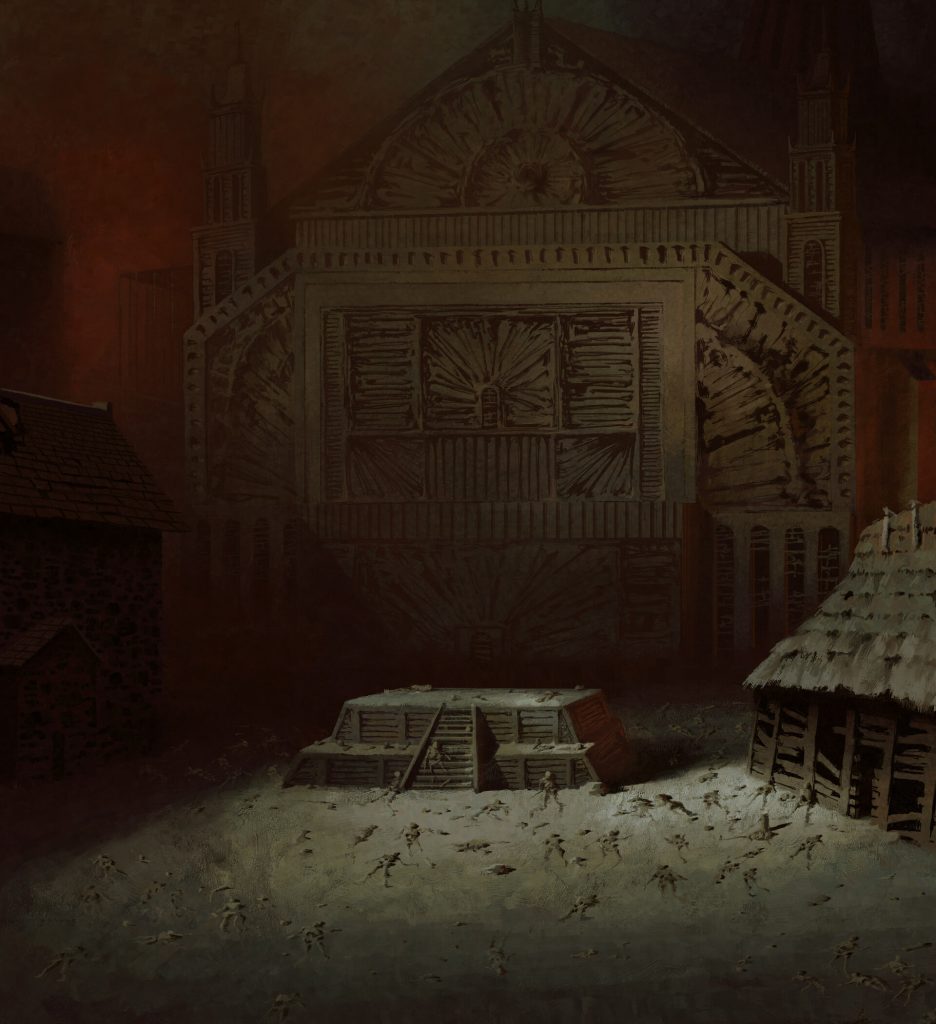
Among this skeletal archive, they find at least twenty (de)generations of quadruped humanoids, which reveals further the horror of the deep past and its incursion into the living present: “The quadruped things – with their occasional recruits from the biped class – had been kept in stone pens, out of which they must have broken in their last delirium of hunger or rat-fear. There had been great herds of them, evidently fattened on the coarse vegetables whose remains could be found as a sort of poisonous ensilage at the bottom of huge stone bins older than Rome. I knew now why my ancestors had such excessive gardens – would to heaven I could forget!” The American Delapore delves deeper, deeper into the alien and yet all-too-familiar loam: “We shall never know what sightless Stygian worlds yawn from beyond the little distance we went, for it was decided that such secrets are not good for mankind.” And then he plunges himself into the darkness, following his black cat “straight into the illimitable gulf of the unknown,” harried by the psychic plague of rats that he channels like a mad mage or medium, like a grim font compulsively spewing forth grotesqueries. Recall that a group of rats is called a mischief, and the word “mischief” comes down from the Old French noun “meschief,” referring to “a misfortune or a trouble, a source of strife or vexation.” In turn, “meschief” stems from the verb “meschever,” which means “to come to grief.” Only with time did the words soften: for a long time, mischief was misery and misery mischievous, undoing plans and works alike. The American Delapore certainly comes to grief, found bloody and squatting over Norrys’s half-eaten corpse. The murder itself is omitted from the story, however, and taking its place is a breakdown of all sense, the penetration and obliteration of the American Delapore by the linguistic and psychic fragments of his forebears. The full weight of ancestral agony and malefaction invades him, down there, in the black site, where the remnants of primordial slaughter lurk under his estate.
But it’s worth noting again that Exham Priory never really belonged to the American Delapore, nor did it belong to his ancestors. The Norman de la Poers were appointed to Exham Priory, first serving as its caretakers and occupants and then as mere human media for the blind howling of Nyarlathotep. Consider again the sequence of displacements making up the narrative. The American Delapore changes his name to its archaic form, de la Poer, as if he is returning to his origins or truest self, and then he seeks to rebuild the ancestral estate he views as his birthright. Lovecraft doesn’t even mean to hide the irony. For one thing, “de la Poer” is no ancient name at all, but, instead, a shallow pun on Edgar Allen Poe’s surname. Indeed, the House of Usher is Exham Priory’s most obvious architectural predecessor, and both exemplify (along with the House of Seven Gables, Hill House, the Overlook Hotel, and others, not to mention the physical sites informing these literary displacements) the appropriation or transposition of the Gothic castle into the uniquely weird register of American psychogeography. Likewise, the parts of Exham Priory the American Delapore rebuilds are but nostalgic recreations of its own past. As such, the real ghost house is the reconstructed façade that squats on top of its abyssal foundation. It is a ghost house in both senses implied by the term: ephemeral or insubstantial, but also haunted and unsettled. This structure replicates exactly the same structure as the American Delapore’s own subjecthood. He has no given name because he is only a simulacrum of a person. He wants to ground himself in the past, but his connection to that past is simultaneously tenuous and suspended. It is tenuous because the architectural and patronymic reclamation that is his primary pursuit, in fact, only functions as yet another displacement. On the one hand, there is in the story no return to the originary, or to the real, at least insofar as these terms refer to the repleteness of patrimony, property, and self-possession. On the other hand, however, the American Delapore does return to his origins. He returns to the dark wellspring of his identity (or, more aptly, the lack thereof), precisely by disrupting or suspending it. He discovers that the shallow overlay of his personality masks its own abyssal foundation. In the “grinning caverns” below Exham Priory, through the interior of the occluded landscape itself, runs a mischief of rats, the rats of madness, a seething plague of expropriation and unsettlement that threatens to emerge from the depths and, orgiastically, to consume and destroy the visible world.
So no wonder Lovecraft felt the need to displace this distinctly American psychogeography into another landscape completely, transplanting Exham Priory into the English countryside as the only ready means of safely sequestering the abyssal foundation of the old estate. After all, when the rats return is when the very medium of representation breaks down into gibberish and ruins. A further irony presents itself in the fact that the entirety of the story takes place precisely as the account given by the American Delapore after his personality is overtaken and subsumed by the rats in his walls. Imagine his pale body, looming in the dark of his cell in the madhouse, wracked with guilt and passion. Spittle flecks his lips. His eyes beseech you to grant him the gift of dissociation. “They must know I did not do it,” he says, dribbling blood. It’s his, but it might as well belong to Norrys, or to whole generations of subterranean victims. “They must know it was the rats, the slithering, scurrying rats whose scampering will never let me sleep […] the rats they can never hear […]” Whereof one cannot speak, thereof one cannot be silent, either – but only speak in broken tongues, in cries of horror, in fragments of dead languages, in mad black laughter.
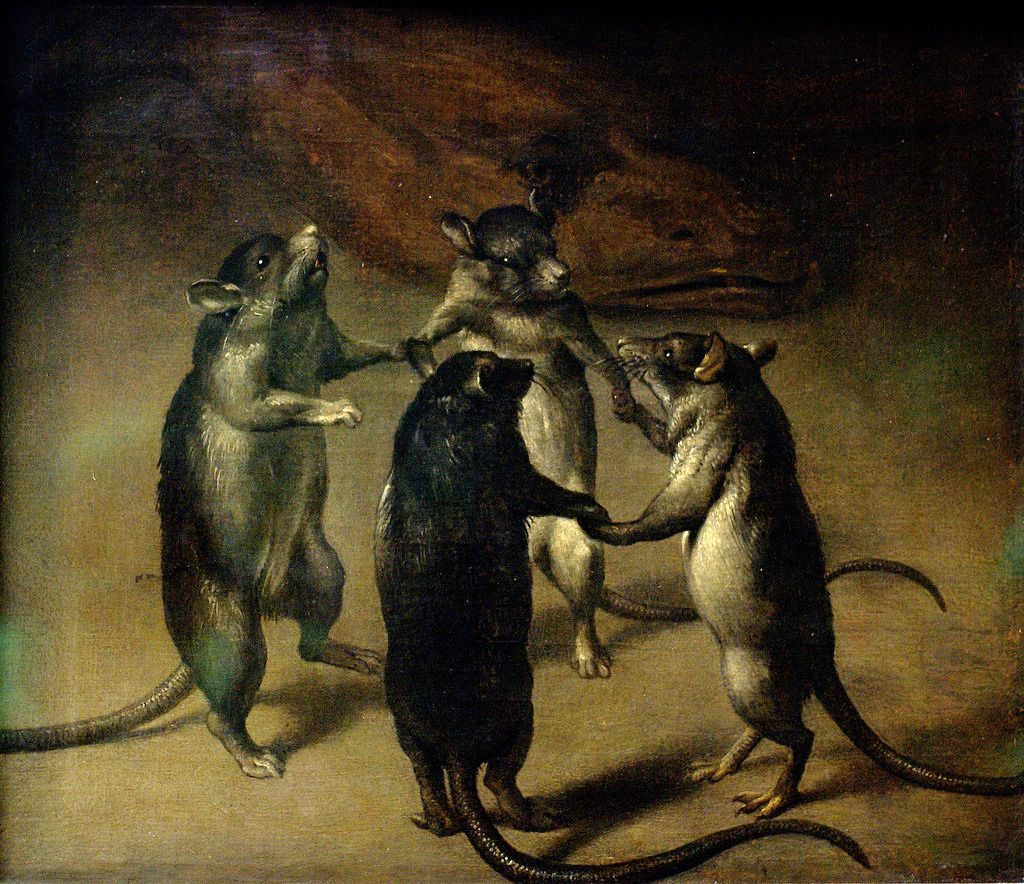
(For the first part of this occasional series, see “Toward an American psychogeography (1): Hawksmoor/Winchester.”)

